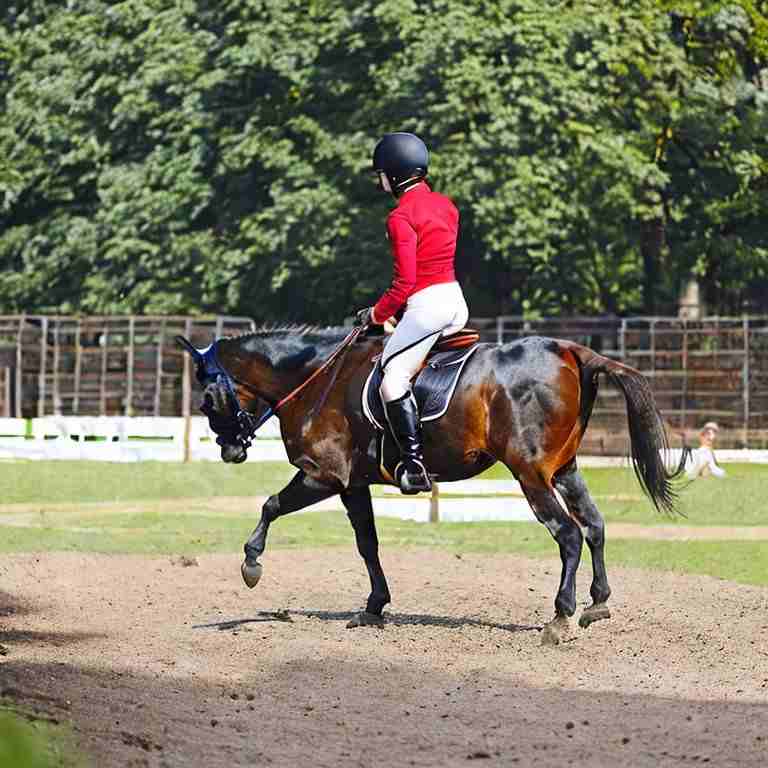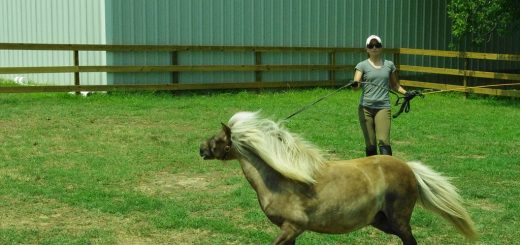How to Get Your Horse to Pay Attention to You
If you work or train horses, you know how important it is for them to pay attention and concentrate on what you want of them. Having a 1,000-pound animal off on its own and not paying attention might be disastrous.
How then do you get your horse to focus? Maintaining a horse’s concentration on their task will get them to pay attention to you. To achieve this, take the following actions:
- Establish respect for your horse through groundwork.
- Select workouts that stimulate your horse’s thought process.
- Make your horse’s workout interesting by changing up their routine.
In this post, we will explain each of these steps in detail and give you some tips and examples on how to apply them.

Gain Your Horse’s Respect Through Groundwork
The basis of trust between you and your horse is laid during groundwork. In the world of horses, it’s often said that if something doesn’t work on the ground, it won’t work in the saddle; the same rule applies to getting your horse’s attention.
Your horse learns respect for and awareness of your personal space through groundwork. Anyone who has had to deal with a horse that isn’t paying attention to them may relate to how suddenly any notion of personal space vanishes. A horse, for instance, might start prancing, pull on the lead, and run their shoulder into you if they become distracted by another horse. Your horse must be able to do the following groundwork:
- Leading politely without pulling or lagging behind.
- Stopping and backing up when asked.
- Yielding their hindquarters and forequarters when pressured.
- Standing still and relaxed when tied or held.
Through these drills, your horse will learn that you are the leader and that they must obey your cues and instructions. They will also assist your horse in learning to respect your boundaries and personal space.
You must utilize precise and consistent cues during these workouts, such as verbal orders, body language, and pressure/release techniques. Additionally, make sure to praise and discipline your horse when they behave well.
For instance, you must use a firm vocal order, gently tug on the lead line, and stop walking yourself if you want your horse to stop when you say “whoa.” As soon as your horse comes to a complete halt, you must remove the tension on the lead line and give him praise.
By doing this consistently, your horse will learn that stopping when you say “whoa” is easier and more rewarding than ignoring you. They will also learn to pay attention to your voice and body signals.

Choose Exercises That Encourage Your Horse to Think
Choosing exercises that stimulate your horse to think is another approach to urge them to pay attention to you. Horses are sophisticated creatures that require both mental and physical activity. They will become disinterested in their work and start looking for anything else to do if they feel bored or unchallenged.
You must select exercises that require your horse to use both their body and brain in order to keep them motivated and involved in their training. Depending on the degree of training and experience of your horse, these exercises should range in complexity and difficulty.
Here are some instances of workouts that stimulate your horse’s thought process:
- Obstacle courses: Cones, poles, barrels, tarps, and other obstacles can be placed for your horse to maneuver around or over. Your horse’s balance, coordination, self-assurance, and problem-solving abilities will all be put to the test by this.
- Transitions: You can ask your horse to change their speed or gait frequently within a session, such as walk-trot-walk-canter-walk-halt-reverse-walk-trot-canter-halt-back up-walk-trot etc. This will keep your horse alert and responsive
to your cues and improve their transitions. - Patterns: You can ask your horse to follow a specific pattern or route around the arena or field, such as circles, serpentines, figure-eights, loops, etc. This will improve your horse’s steering and accuracy and make them pay attention to where they are going.
- Games: With your horse, you can participate in a number of games that offer rewards or penalties, such as Simon Says, follow-the-leader, and red-light/green-light. Your horse will enjoy playing these games while also picking up new skills.
You must utilize precise and consistent cues during these workouts, such as verbal orders, body language, and pressure/release techniques. Additionally, make sure to praise and discipline your horse when they behave well.
For instance, if you want your horse to follow you in a game of follow-the-leader, you must walk away from your horse while giving a strong and assured voice command, such as “come on” or “let’s go.” You must congratulate your horse and reward them as soon as they follow you. Turn around and wave your arms or whip till your horse follows you if it doesn’t, then commend and reward them.
By doing this consistently, your horse will learn that following you is easier and more rewarding than ignoring you. They will also learn to pay attention to your voice and body signals.

Switch Up Your Horse’s Routine and Make the Workout Interesting for Them
Although they are creatures of habit, horses are nevertheless easily bored. Your horse will become bored with their task and look for something else to do if you consistently do the same thing with them.
You must alter your horse’s routine and make their workout exciting for them if you want to keep them engaged and motivated. This entails altering the place, time period, degree of difficulty, frequency, and nature of the work you conduct with your horse.
Here are a few instances of ways to vary your horse’s routine:
- Change the location:Try taking your horse to a different location every day, such as a trail, a beach, a park, etc., rather than working in the same arena or field. Your horse will be exposed to novel sights, noises, smells, and challenges, which will keep them interested and focused.
- Change the duration: Try altering the duration of your sessions rather than working for the same period of time every day. You can work for greater stretches of time on certain days and for shorter stretches on others. Your horse won’t grow weary or bored with their labor if you do this.
- Change the intensity: Consider altering the intensity of your workouts rather than working at the same level of difficulty every day. You can work more diligently some days than others. This will protect your horse from being bored or complacent by mentally and physically taxing them.
- Change the frequency: Try altering the frequency of your sessions with your horse rather than working with him daily or every other day. You can work more or less frequently depending on the day. This will prevent your horse from becoming overworked or burned out and give them adequate time to rest and recover.
- Change the type: Try performing various types of work with your horse instead of the same activity every day. You can work out on the ground, ride, lunge, perform free jumps, play games, etc. on some days. Your horse will enjoy their work more as a result of preventing boredom and ruts.
You must be flexible and plan ahead if you want to implement these changes successfully. Your routine needs to be modified in accordance with your horse’s personality, preferences, state of mind, and level of energy. Additionally, you must keep an eye on your horse’s development and feedback to ensure that the changes are not overpowering or understimulating them.
For instance, if you want to change the location of your exercises, you must ensure that your horse feels secure and at ease there. Make sure they are not frightened or stressed by the new environment by introducing them to it gradually and positively. Additionally, you must confirm that the new location has been approved for use and is secure and appropriate for your work.
By doing this carefully, your horse will learn to adapt and enjoy the new place. They will also learn to pay attention to you and trust you more.
How Long Is a Horse’s Attention Span?
Horse’s attention span is typically 12 seconds. It is crucial that you keep in mind this when training your horse because that is a very brief period of time.
If you keep asking a horse for the same thing over and over again without giving them a break, it can become tiresome and frustrating for them. Expecting your horse to focus on one thing for an hour straight is unreasonable; instead, encourage them by giving them something else to consider as soon as they take a positive step.
Horses learn through pressure and release, so as soon as your horse complies with your request, you can stop exerting pressure. Return to your current task, but bear in mind that if you keep your horse thinking, they will react and concentrate much more readily.
Conclusion
Getting your horse to pay attention to you is not only important for safety and learning, but also for building a strong and positive relationship with your horse. By following these steps, you can get your horse to pay attention to you and have fun with them at the same time.
Remember, the key is to keep your horse’s mind focused on their work by:
- Gaining their respect through groundwork.
- Choosing exercises that encourage them to think.
- Switching up their routine and making the workout interesting for them.
We hope this post has helped you understand how to get your horse to pay attention to you.













